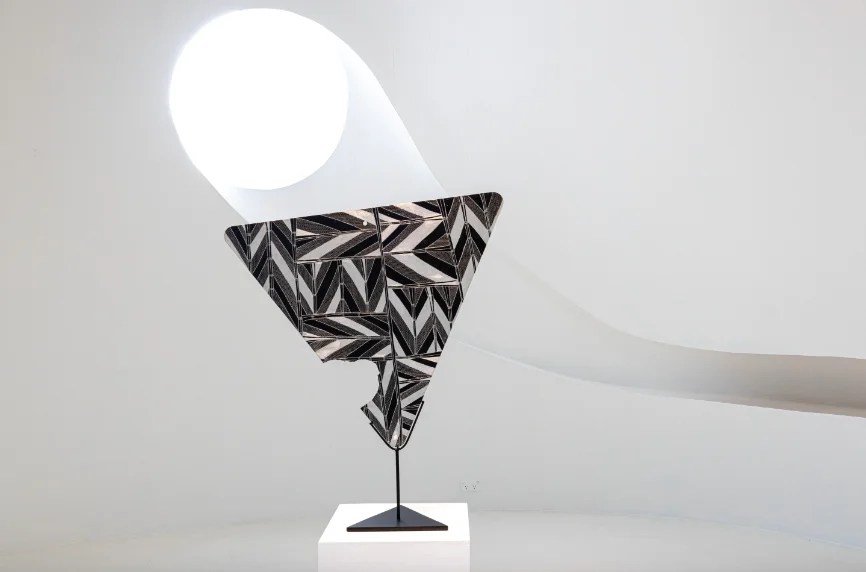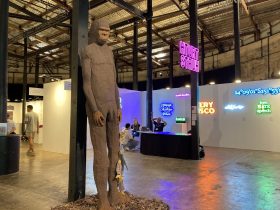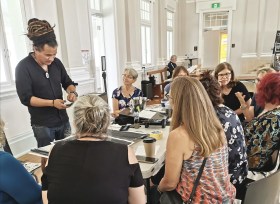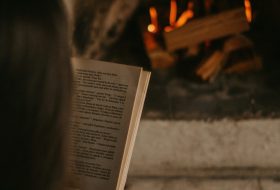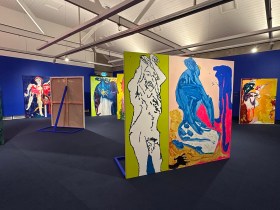The word Yolngu or Yolŋu is a composite term, referring to the Indigenous peoples of a vast area of northern Australia that includes Arnhem Land, Darwin and the northern extremes of Western Australia, the Northern Territory and north-western Queensland. The word entered the vocabulary of Australian arthouse cinema-goers via Stephen Maxwell’s 2001 film Yolngu Boy, which explored the liminal space between ancient native Australian culture and that culture merging into contemporary, Westernised Australia, fusing traditional backgrounds with football and hip hop music. In other words, the old meeting the new.
The current exhibition at MAGMA galleries, a relative newcomer in Melbourne’s inner north, deals with similar themes, showcasing the works of Yolngu artists Bandarr Wirrpanda and Yinimala Gumana. These artists, most notably Wirrpanda (himself the son of highly respected artists Galuma Maymuru and Dhukal Wirrpanda), transfer ancient traditions of images, motifs, legends and storytelling into a more contemporary setting. In this case, Wirrpanda has presented Indigenous Australian culture in the more recent medium of etched aluminium, using recycled road signs and other reclaimed metallic canvases.
The result is visually striking and showcased effectively in the gallery, which is one of the best-designed art galleries in Melbourne, having been designed by a professor of architecture at RMIT University. The metallic artworks, such as the giant centrepiece hanging from the ceiling, are suitably impressive – not only do they have the meticulous detail characteristic of Australian Aboriginal art, but using aluminium etched into with a jeweller’s drill as a medium gives many of the works a distinctively metallic sheen and a consciously new look to millennia-old art.
The piece upstairs, entitled Darraŋgi, is a highlight – a single artwork of an inverted triangular road sign with the sleek new art on one side and the original rusted hues on the other. It sits alone among the curves of the mezzanine and is an excellent example of stylish curation.
Wirrpanda’s works are complemented well by the pieces from Gumana, who, compared to Wirrpanda, uses more conventional mediums, in this case earth pigments on flat stringybark or, alternatively, the hollowed trunks of stringybarks. The more earthy tones and feel of these pieces, which constitute only around a third of the show, live harmoniously with Wirrpanda’s more modern metallic medium, since they are both telling tales from Australia’s ancient cultures – one a natural, ancient medium, the other a more recent, human-made material.
The exhibition is a joint venture by MAGMA and the Buku-Larrnggay Mulka Centre, which is situated in the north-eastern tip of Arnhem Land. The show’s art is entwined with Indigenous stories and legends of the peoples of the area, as can be seen from the artwork certificates that come with the works.
These certificates tell of the stories of the individual pieces, tales presumably related to the Dhudi-Djapu and Dhalwaŋu clans, to which Wirrpanda and Gumana, respectively, belong. Knowing these stories adds another dimension to the works, a sense of geographical locality, as well as historical and cultural immensity.
The crimes toward the Indigenous people by the ‘intruders’ of the early 1900s are also mentioned in a certificate of Gumana’s art. Australia, like many countries, has a harsh history. Australia Day has been renamed Invasion Day by many people for good reason.
Read: Exhibition review: Lesley Dumbrell: Thrum, five decades of practice at AGNSW
With its slick, stylish interior and works as large, detailed and distinctive as these (not to mention the lavishly-produced promotional books produced for this exhibition), MAGMA has again proven that it’s a gallery to watch.
Bandarr Wirrpanda and Yinimala Gumana: Timeless will be exhibited until 27 October at MAGMA Galleries in Victoria.
